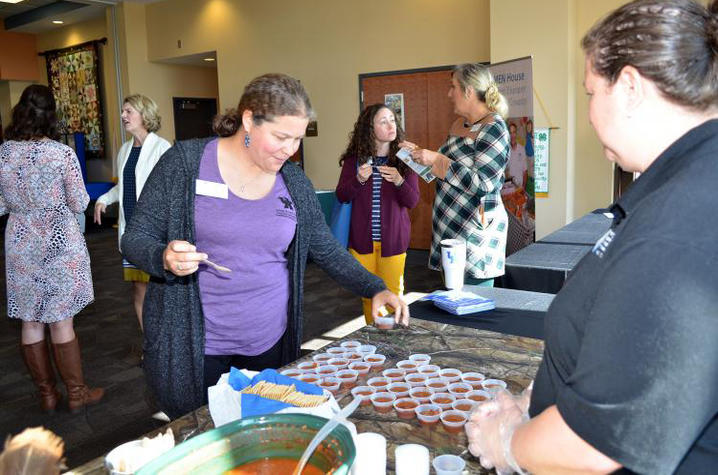UK Launches Cook Wild Kentucky
LEXINGTON, Ky. (Nov. 25, 2019) — The University of Kentucky Nutrition Education Program (NEP) recently released a series of recipe cards aimed at helping the state’s most vulnerable citizens learn how to prepare wild game. The series, titled Cook Wild Kentucky, features 17 recipes with some of the state’s most popular wild game including venison, rabbit, fish, frog, dove and duck.
Right before hunting season begins, hunters and their families often clear out their freezers to make room for the next season’s bounty. Much of their surplus goes to local food banks, but with little knowledge of how to prepare the wild game, some food banks struggle to accept and distribute it to their clientele. A brainstorming session a year ago between UK Cooperative Extension Service staff and Tamara Sandberg, executive director of Feeding Kentucky, led to the idea of the recipe cards featuring wild game.
“Protein is one of the most expensive items at the grocery store, so beautiful ground venison or steak are really highly desired items by the families we serve,” Sandberg said. “It will make a big difference.”
The recipe cards include everything from venison chili to rabbit jambalaya. Nutrition professionals with NEP tested all the recipes over the past year to ensure that they not only taste good but are healthy, inexpensive and readily accessible for the program’s limited-resource families.
“We definitely look at the types of foods that are available in the counties, so our recipes include ingredients that are low-cost and accessible throughout the state,” said Jann Knappage, UK food system specialist in the UK College of Agriculture, Food and Environment. “As we develop the recipes, we look at the nutrition guidelines to make sure they do not include too much salt or fat but still taste good. All of the nutrition labels are included on the recipes, so folks can keep track and be aware of what is in their food.”
Throughout the recipe development process, NEP staff relied heavily on the expertise of staff at the Kentucky Department of Fish and Wildlife Resources, who have knowledge in wild game sources, processing and preparation.
“We jumped on board and provided a lot of recipe suggestions,” said Becky Wallen, Field to Fork coordinator for Kentucky Fish and Wildlife Resources. “Many of our recipes were deep-fried or not as nutritious, so they were able to take that foundation and make the recipes more nutritious and tasteful. That, in turn, is better for our programs, because we now can provide these recipes that we know are nutritious.”
Kentucky Department of Fish and Wildlife Resources was able to connect UK with Kentucky Hunters for the Hungry who readily became a partner in the project. The charitable volunteer organization’s mission is to relieve hunger and malnutrition in the state. It pays for the processing and distribution of donated venison to those in need.
NEP plans to expand Cook Wild Kentucky and add more recipes next year.
“The problem is not that we don’t have enough food in Kentucky but that we need to get better about making the resources we have available to the people who need it,” Sandberg said.
Cook Wild Kentucky recipe cards are available through local offices of the UK Cooperative Extension Service, local food pantries and on the NEP website, www.planeatmove.com.

As the state’s flagship, land-grant institution, the University of Kentucky exists to advance the Commonwealth. We do that by preparing the next generation of leaders — placing students at the heart of everything we do — and transforming the lives of Kentuckians through education, research and creative work, service and health care. We pride ourselves on being a catalyst for breakthroughs and a force for healing, a place where ingenuity unfolds. It's all made possible by our people — visionaries, disruptors and pioneers — who make up 200 academic programs, a $476.5 million research and development enterprise and a world-class medical center, all on one campus.




